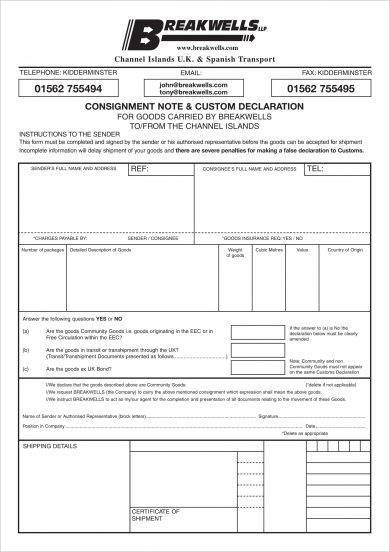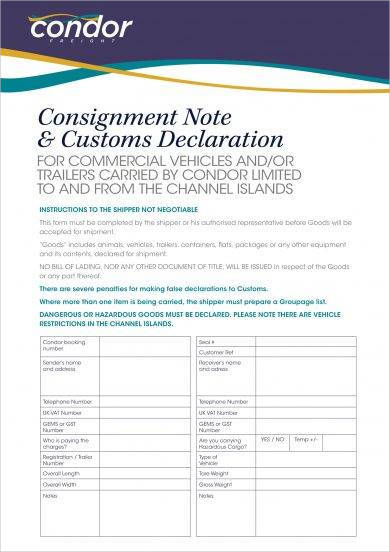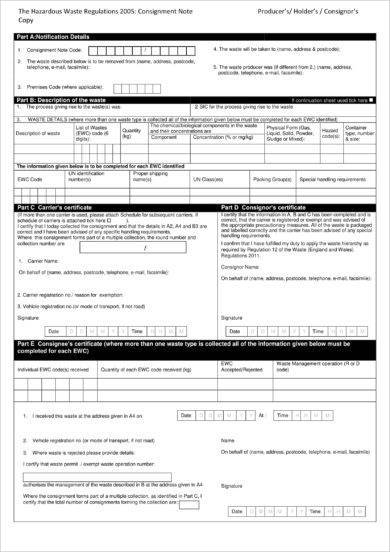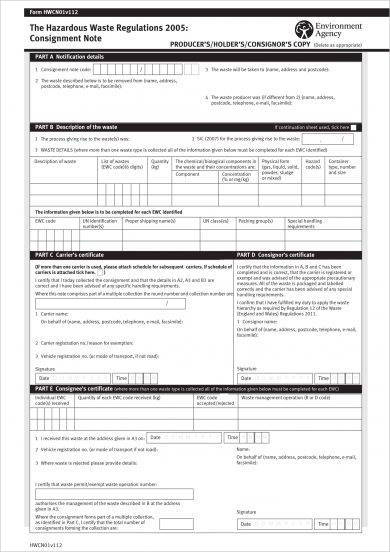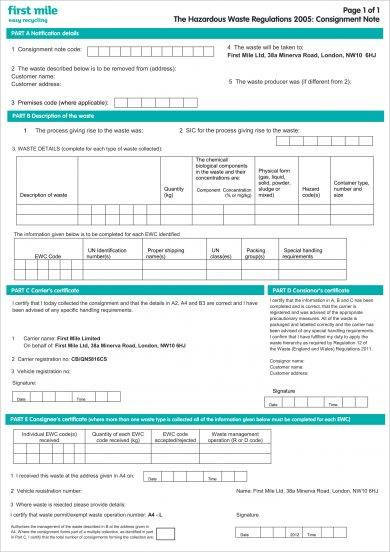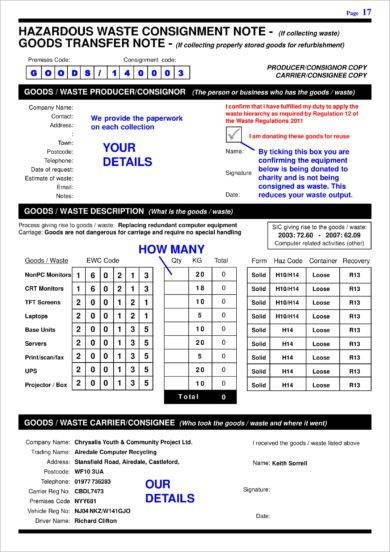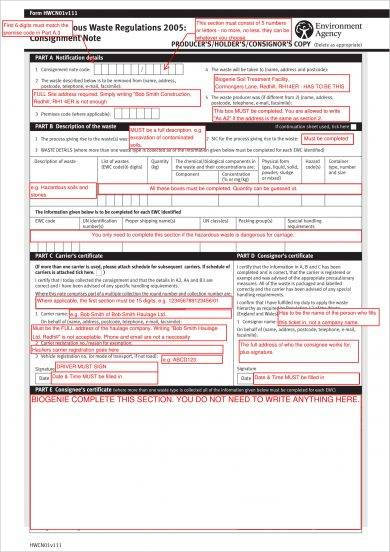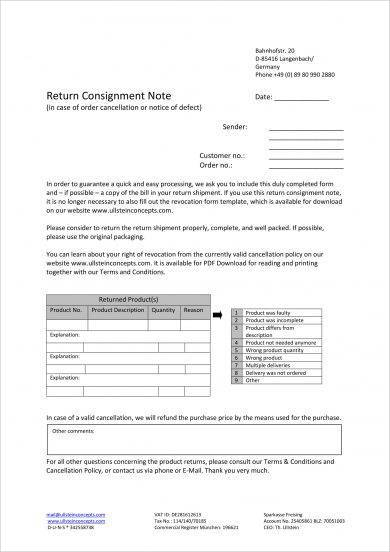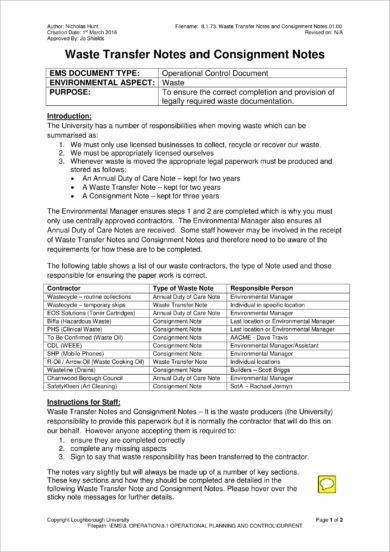9+ Consignment Note Examples to Download
Did it ever occur to you that you have something you are holding it in your hands, you are keeping it in your house, you are taking care of it, yet you do not have the right of ownership for it? True and sad as it may seem, there are some things that we possess but we do not own it. This is just the case in consignment. You may also see welcome note examples.
The owner of the inventories will send them to a consignee, the one responsible for handling the inventories according to the simple agreement between the consignor and consignee, properly storing them, and selling them in behalf of the rightful owner.
In form, the inventories might be on the premises of the consignee, but in substance, the ownership belongs to the consignor, hence substance over form. The contract of carriage that binds between the owner and the consignee is what we call consignment note. You may also like meeting note examples.
Examples of consignment notes can be found in the next section.
Breakwells Consignment Note Example
Condor Consignment Note and Customs Declaration Example
Detailed Consignment Note Example
Consignment Defined
Consignment is the act of sending over to another person, the consignee, any goods from the consignor, but the consignor will retain legal ownership of the goods although it is already not in his possession. This is done for the purpose of shipping goods, intending the goods to be sold in a consignment store, or transferring goods to an auction. You may also see what is a note?
Features of a Consignment
1. The relationship between the consignor and consignee is not that of buyer and seller. The consignee will not pay for the goods unless it would be sold after it has been transferred to him. He has no obligation to pay the consignor whenever the goods will not be sold. The goods are simply put in his possession so he becomes an agent who is authorized to sell such goods. You may also like nursing note examples.
2. The consignor will shoulder the expenses in connection with the consignment which includes packing expenses, carriage expenses, dock dues, landing charge, freight costs, and insurance cost. Meanwhile the consignee is responsible to shoulder the unloading charge and import duties. You may also check out chart note examples.
3. The consignee cannot be held responsible in case the goods will be damaged during its transport or any other procedure before it is being displayed for sale.
4. The risk of profit or loss belongs only to the consignor, and the consignee cannot be held responsible for such matters.
Consignment Note
This is a document in a consignment transaction that is prepared by the consignor and countersigned by the carrier that serves as a proof of receipt of the consignment. It can also be used as an alternative of lading, and it’s not a contract of carriage or a negotiable instrument. It also includes the instruction by the consignor given to the carrier. You might be interested in progress note examples.
Discussion and Examples of Consignment Note
Environment Agency Consignment Note Example
First Mile Consignment Note Example
Contents of the Consignment Note
There might be different formats as well as contents in a case note of every entity, but there are some things that they have in common. There are certain important elements of a consignment note that must be present and they are the following:
- The date of the consignment note
- The place where it is made
- The name and address of the sender and carrier
- The place and the date of taking over of the goods
- The place designated for delivery
- The name and address of the consignee
- The description of the goods
- The method of packing
- In the case of dangerous goods, their generally recognized description
- The number of packages as well as their special marks and numbers
- The gross weight of the goods or their quantity otherwise expressed
- Charges relating to the carriage such as carriage charges, supplementary charges, customs duties, and other charges incurred between the making of the contract and the time of delivery
- The instructions for customs
- A statement that the carriage is subject to the provisions of this simple agreement
Other matters may also be mentioned if applicable such as the following particular cases:
- The charges that must be shouldered by the sender or the consignor
- The amount of cash on delivery charges
- A simple statement that transshipment is not allowed
- A declaration of the value of the goods
- The amount representing special interest in delivery
- The sender’s instructions to the carrier regarding insurance of the goods
- The agreed time limit within which the carriage is to be carried out
- A list of the documents given to the carrier
Tips for Consignment Selling
Whether you may be new or a continuing consignor in a consignment selling, the tips below can help you in your consignment selling. Evaluate if you have done your part as a consignor by checking on these items.
1. Check the shop
The first thing that you must do in consignment selling is to check the shop, particularly the items that are inside the shop to check if you have a direct competitor within the same store. Also evaluate the looks, feels, ambiance, and appearance of the shop. You may also see loan note examples.
Determine if your chances of selling that shop will be great or slim depending on what you have observed. You must also check the merchandise condition, the display of the merchandise, and the prices of comparable items within the store. This will give you a hint on whether or not you will proceed to have a consignment with the shop. You may also like delivery note examples.
2. Choose a shop with an adequate traffic
Depending on the product that you are selling, you must choose a shop with an adequate traffic. You have a greater chance of selling your products faster if you will consign them in a shop that attracts a huge number of customers. Hence, first of all, you must determine if the certain shop that you want to consign with is able to attract enough buyers. You may also check out doctor note examples.
Note that there are already lots of consignment stores out there that go in and out of business quickly because they do not have enough customers and, in turn, profit to sustain them. Choose those that are already established, for example, those that are already three or more years in business. You might be interested in thank-you note examples.
3. Make sure your products are displayed
You might say that you have already known the consignee for so long that you trusted the consignee so well. However, it is still a protocol to make sure that your products are right in the line of customer traffic.
You must check whether they are just tucked in the furthermost corner of the store not accessible to customer. You can ask the consignee if they can arrange your goods in such a way that it can be easily seen by the customers. You may also have an arrangement with the consignee to have an agreement that your goods be included in the store window display. You may also see what is a briefing note?
4. Set a time table
Always set a time table or the length of time that you want your goods to be in the hands of the consignee. If within that specific period of time they are unable to sell your product, you can agree with the consignee to pull them out.
Do not dwell for too long in areas where your goods have lesser chance to be sold. Reevaluate your decisions in choosing the store as well as the location of the store. Maybe their location is not suitable for your goods, and maybe your target market is not within the area of your consignment. You must not keep your inventories rolling. You may also see release note examples.
5. Write an agreement
Ensure that your basic agreement must be formal, valid, and binding, and it must be written with terms and conditions and must be signed by both parties, the consignor and consignee. It must also include the terms with regard to the payment schedule, responsibility of the consigned goods when it is lost or stolen, as well as the display and arrangement of the merchandise in their store.
You have to clearly lay down these terms in the consignment agreement to avoid confusion and misunderstanding between the parties.
6. Know the fees
Know how much you will be getting from the sale of the consigned goods as well as the percentage of the consignee. Also find out if it is a 30-, 60-, or 90-day consignment.
You must specify the length of time you want your items to be consigned to a particular consignee and this must also be specified in the terms and conditions of the consignment. Also inquire if there are other costs that you must shoulder, for example administration fee. Beware of the shops that do not let you know the prices they are going to charge for your consigned items. You may also see free note examples.
Hazardous Waste Consignment Note Example
Professional Consignment Note Example
Return Consignment Note Example
Waste Transfer Notes and Consignment Notes Example
7. Check the shop’s back-end system
You must also ask how your inventory is tracked and when goods are paid for. There are certain consignees that have computerized tracking, and these are the ones that you can trust since they keep a more accurate record than those that are still in the traditional way of tracking and selling the consigned goods. You may also see credit note examples.
Furthermore, make sure to receive a receipt for the items brought in and the general statement at the time of payment showing what sold. It is better that you have a detailed list of the items that are sold so you can also compute the amount that you must be getting.
8. Determine if your goods are cared and treated well
Also determine what type of insurance that your consignee has if you are selling valuable items such as jewelry, artworks, or antiques. These things must have a proper insurance since they require proper handling and care. If you find out that the consignee does not have theft or fire insurance, you must carefully think again about proceeding to place your goods in that store. You may also see field notes examples.
You must also check if there are fire alarms installed and water sprinklers that are working in case of fire. Ensure that your items are being carefully cared for and treated well.
9. Know your product
Finally, ensure that you clearly know every bit of your product. Have time to inspect the quality of your merchandise to ensure that there are no tears or stains or cracks or other defects particular to a certain product.
Your products must be in pristine condition when you hand them over to your consignee. You can also have an arrangement with your consignee with regard to the cost of the damages of your products when they are already displayed in their store. You may also like define promissory note?
By now, you already have the knowledge it takes to sell on consignment, and you have acquired enough knowledge with regard to consignment note, a document that serves as a receipt of the consignment transaction. If you still have any confusions, you can always refer to the examples presented above. You may also check out note templates & examples.



